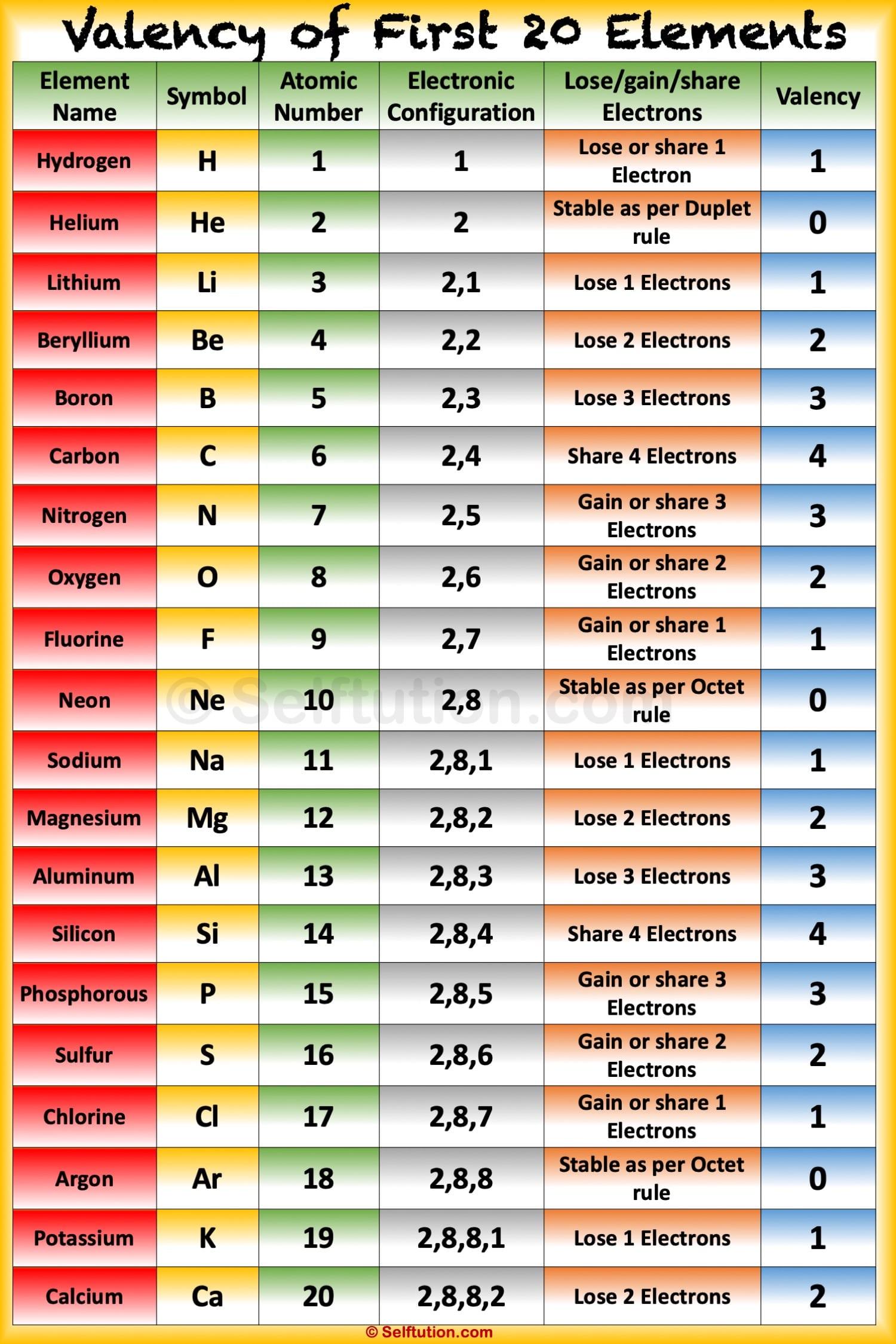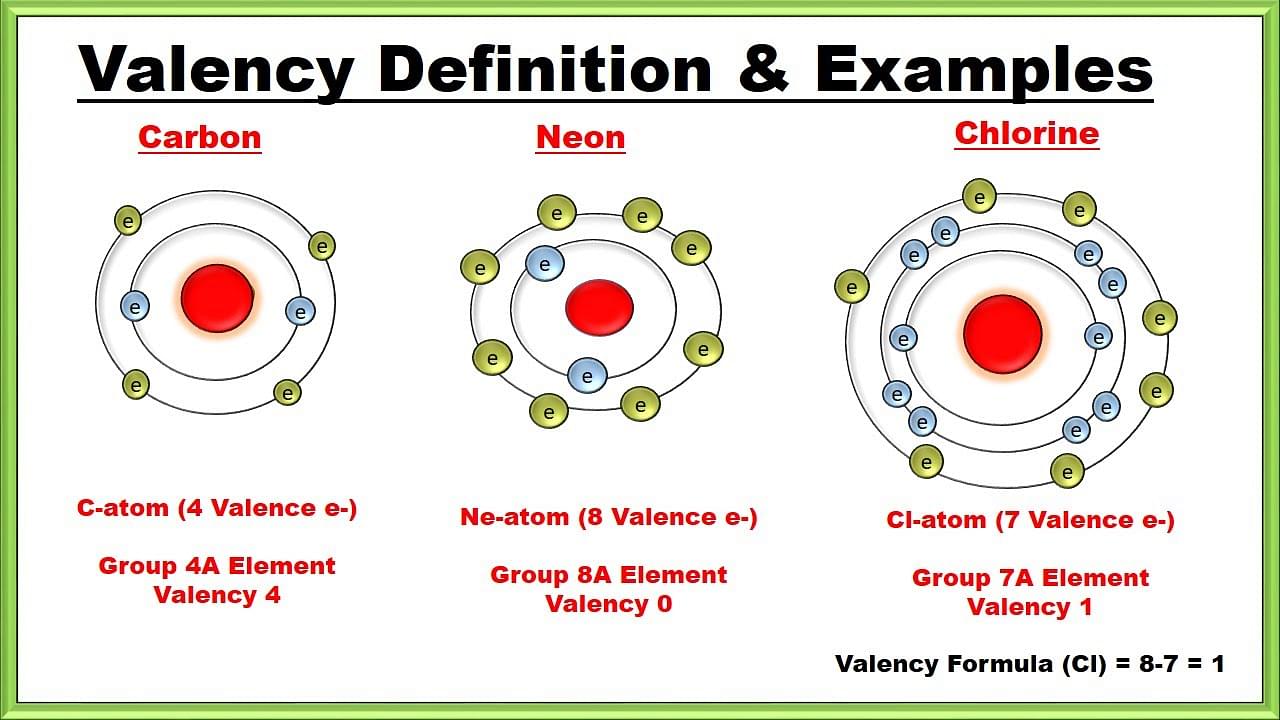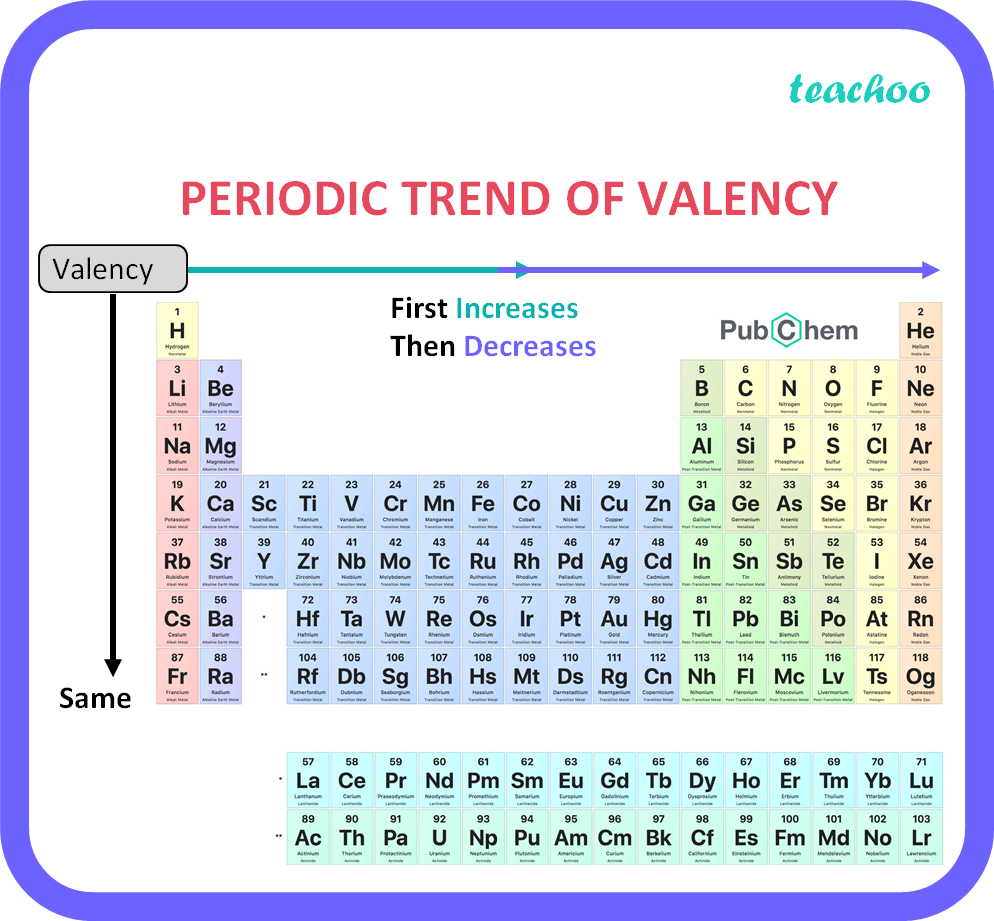Understanding Valence: The Key To Chemical Bonding Explained
Ever wondered what dictates the fundamental building blocks of matter and how they interact? The concept of "valence" holds the key to understanding the very nature of chemical bonding and molecular structure.
At its core, valence serves as the compass guiding the formation of molecules. It's the combining capacity of an atom, determined by the number of hydrogen atoms it can bond with. Consider methane (CH), where carbon exhibits a valence of 4, showcasing its ability to form four bonds. Similarly, ammonia (NH) sees nitrogen with a valence of 3, and water (HO) features oxygen with a valence of 2. Even in hydrogen chloride (HCl), chlorine demonstrates a valence of 1.
The concept of valence isn't merely a historical curiosity; it's a cornerstone of modern chemistry. Understanding valence helps us predict the types of bonds an atom will form, the shape of the resulting molecule, and even its reactivity. But how did this concept come to be, and what does it truly represent?
- Bledsoe Net Worth Career Drew Eric Tempestt More
- Unlock Kendra Wilkinsons Fitness Secrets Diet Exercise Tips
| Category | Details |
|---|---|
| Name | Valence (in Chemistry) |
| Definition | The combining capacity of an atom of a given element, determined by the number of hydrogen atoms that it combines with. It also refers to the number of bonds that an atom can form as part of a compound. |
| Synonyms | Valency |
| Importance | Determines the number of other atoms with which an atom of the element can combine, influencing the formation and properties of molecules and compounds. |
| Historical Context | The term was introduced in 1868. |
| Key Concept | The number of bonds an atom can form, reflecting its ability to combine with other atoms to create molecules or chemical compounds. |
| Relationship to Electrons | Related to the number of electrons that would be added, lost, or shared when an atom reacts with other atoms. Valence electrons, those in the outermost orbit, play a crucial role. |
| Examples | Carbon (valence of 4 in methane), Nitrogen (valence of 3 in ammonia), Oxygen (valence of 2 in water), Chlorine (valence of 1 in hydrogen chloride), Noble gases (valence of 0). |
| Variations | Can be expressed as a positive or negative integer to represent the binding capacity. |
| Relationship to Atomic Weight | Valence varies periodically with increasing atomic weight. |
| Application | Predicting chemical reactions, understanding molecular structures, and determining the properties of compounds. |
| Reference | Wikipedia - Valence |
The term "valence" was introduced in 1868, and it quickly became a fundamental concept in chemistry. Scientists recognized that certain elements consistently combined with a fixed number of other atoms. This power of combination, both in general and as a numerical value, became the essence of valence.
The valency of an element offers a precise measure of an atom's ability to forge bonds with other atoms, leading to the creation of molecules and chemical compounds. The characteristics of an element that indicate how many more atoms can join one of its atoms in a covalent bond are known as valence, or valency, in chemistry. This capacity is called valence, and it varies periodically with increasing atomic weight. Elements like the noble gases, which almost never combine with any other element, all have valences of 0.
Think about hydrogen (H) and chlorine (Cl), both sharing the same valence. This foundational understanding allows chemists to make predictions about how elements will interact, a critical step in understanding chemical reactions.
- Bushwick Bills Net Worth Legacy How He Earned 15m 2024
- Exploring Beauty In Black More Everything You Need To Know Now
The meaning of valence goes deeper than simple bond counting. Its the degree of combining power of an element, as showcased by the number of atomic weights of a monovalent element (like hydrogen) that an element can combine with or substitute.
Many chemists in the past were focused on chemical equivalents for instance, what mass of acid A neutralizes base B? Valence provided a framework to answer these questions, relating the masses of reacting substances.
Now, let's consider the world beyond the purely scientific, a world where understanding character and capacity are crucial the realm of storytelling, where the same principles of valence can be applied to understanding the depth of a character.
Imagine the author, Tom Clancy. He was America's, and the world's, favorite international thriller author. Starting with "The Hunt for Red October," all of his previous books hit #1 on The New York Times bestseller list. The success of his books is a testament to his ability to create compelling narratives and deeply etched characters. His work in fiction, thriller, and suspense has left an indelible mark.
However, figuring out how stable an element is and how it will react with other elements isn't as simple as just looking at the number of electrons in its outermost shell. Similarly, appreciating the complexity of a well-written story demands more than just a superficial understanding of the plot.
Take "The Hunt for Red October" as an example. The novel showcases Clancy's ability to weave intricate plots, creating characters with strengths, flaws, and motivations that resonate with readers. The book's success launched Clancy's career, with subsequent novels also achieving phenomenal success.
This is much like the concept of valence in chemistry, valence, or valency, which describes how easily an atom or radical can combine with other chemical species. In both the scientific and literary realms, the interactions determine the whole.
The "Clancy World Tour" was the ninth concert tour by the American musical duo Twenty One Pilots, in support of their seventh studio album "Clancy" (2024). The tour began on August 15, 2024, at the Ball Arena in Denver, and concluded on May 14, 2025, at the O2 Arena in London. Just as the properties of an element are consistent, the popularity of musical artists and authors can be sustained over time.
The W.S. Clancy Memorial Funeral Home in Branford, CT, provides services to help families through the loss of a loved one. Their commitment to honoring lives shares a similar ethos to the foundational elements of chemistry: a steadfast understanding of the core components and their interrelationships.
Clancy & They's is known nationwide for its excellence in the construction industry. Similar to the structure of molecules, their projects build on a solid foundation, layer by layer, to create lasting results. This parallels the way that valence helps us build a molecular structure.
Consider the idea of "The Blue Castle," a novel by the author of "Lucy M." This story follows the main character, Valancy Stirling, as she faces a life-altering situation. Valency is about building up or breaking down, just like in the story of "The Blue Castle."
Chemistry isn't just about the formula; it's about understanding how atoms interact to form the world around us. It also involves a deep commitment, much like the ethos of a company that prioritizes health, safety, and well-being above all else.
Remember, shells don't neatly stack on top of each other, so valence (and oxidation state) are not necessarily the same as the total number of electrons in the outer shell. This reminder reinforces the idea that in both science and the human experience, simplicity can belie the complexity that governs the whole.
- Harvey Levin Age Height Boyfriend More Unveiled
- Milo Manheim More Exclusive Photos News You Need To See

Valency and Variable Valency Valence Shell and Electrons » Selftution

What Is The Meaning Of Diagrammatically at Kevin Davidson blog

How does valency of an element vary across a period Class 10 Teachoo